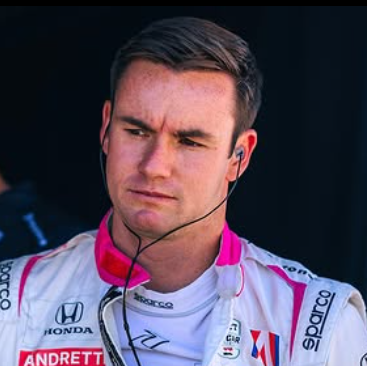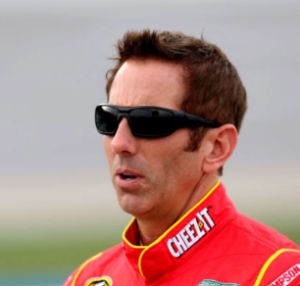IndyCar’s willingness to experiment with different venues is a testament to its commitment to growth and innovation
However, the balance between exclusivity and public accessibility remains a key consideration. The Thermal Club race may serve as a learning experience, guiding the series in refining its approach to venue selection moving forward.
Ultimately, the decision to race at the Thermal Club remains a double-edged sword. While it brings fresh challenges and unique opportunities, it also raises questions about fan involvement and broadcast reliability.
With this race behind him, Kirkwood will be focusing on upcoming rounds where he hopes to regain momentum.
Andretti Global will need to address any underlying issues and ensure that both drivers have a competitive and reliable setup moving forward. If Kirkwood can bounce back from this disappointment, he remains a strong threat in the series.
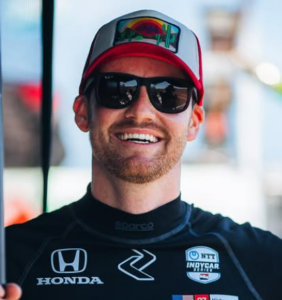
Also Read: Richard Childress Racing Shocks Fans with Kasey Kahne’s Bold New Paint Scheme and Podcast
Table of Contents
Kyle Kirkwood Reflects on IndyCar’s Race at Thermal Club
The Evolution of IndyCar at the Thermal Club
The 2025 IndyCar season marked a significant shift with its second race being held at the Thermal Club, a private motorsports facility in California.1
This event was not just another race on the schedule; it was the first championship race at the track after a non-championship exhibition event in 2024.
While some critics questioned the decision to race at a private venue, Kyle Kirkwood, an Andretti Global driver, offered his perspective on the matter.
Unfortunately not our day, but always good to be back with the @vassersullivan crew 🙏 Congrats to the 12 car on a podium! pic.twitter.com/blhWwnJa3g
— Kyle M. Kirkwood (@KKirkwoodRacing) March 16, 2025
A Unique Challenge: The Thermal Club’s Track Characteristics
Kirkwood highlighted the characteristics of the Thermal Club’s circuit, explaining how its layout contributed to an interesting race. Initially, many believed that overtaking opportunities would be limited due to the track’s design.
However, the reality turned out differently, with a high number of overtakes taking place. One of the contributing factors, as Kirkwood noted, was tire degradation, which played a role in race strategy and on-track battles.
Comparing IndyCar to the PGA Tour: A Thought-Provoking Parallel
During an appearance on the Pit Pass Indy podcast, Kirkwood made a compelling comparison between IndyCar’s decision to race at the Thermal Club and the PGA Tour’s practice of holding events at private golf courses.
He pointed out that, similar to IndyCar’s decision, the PGA Tour often holds tournaments at exclusive venues with limited public access.
This perspective adds a new dimension to the debate, framing the move as a strategic decision that aligns with practices seen in other sports.

Kyle Kirkwood :Fan Access and Engagement
A Key Concern
One of the biggest concerns about holding an IndyCar race at the Thermal Club was the limited access for fans.2
Unlike traditional street or oval circuits that can accommodate large crowds, the Thermal Club’s exclusivity meant that fewer spectators could attend in person.
While this setup works in golf, where audiences are accustomed to private course events, motorsports typically thrive on large, passionate crowds.
The balance between exclusivity and fan engagement remains a crucial factor in assessing the success of this event.
The Impact of Tire Degradation on Racing Action
Despite initial concerns about the track layout, the race turned out to be more competitive than expected. Kirkwood pointed to tire degradation as a major factor influencing overtaking and race strategy.
With drivers experiencing varying levels of grip over the course of a stint, some were able to capitalize on others’ struggles, creating dynamic racing conditions.
This aspect of the race added an unpredictable element, making it an exciting spectacle for viewers at home.
Kirkwood acknowledged that the decision to race at the Thermal Club came with both benefits and drawbacks.
On one hand, the circuit provided a unique racing experience, challenging drivers with its layout and surface conditions. On the other hand, the exclusivity of the venue meant that general fans had limited access, leading to concerns about engagement and visibility.
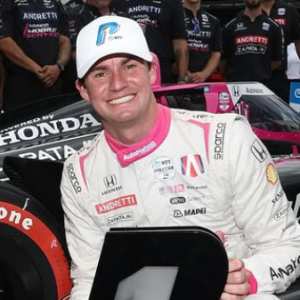
Kyle Kirkwood’s Verdict: A Work in Progress
Kirkwood’s reflections on the event highlight both the promise and the challenges of racing at private venues.3
While he appreciated the racing dynamics and saw the value in IndyCar’s decision to explore new markets, he also acknowledged the drawbacks, particularly in terms of fan engagement.
As the series continues to evolve, feedback from drivers, teams, and fans will play a crucial role in shaping future race locations.

Technical Difficulties: The Broadcast Blunder
One of the major talking points from the Thermal Club GP was the unexpected broadcast issues. FOX’s online stream and television coverage suffered a massive disruption around Lap 20, going offline entirely.
While the feed returned 15 laps later, it came back without audio or on-screen graphics, frustrating fans and raising questions about the reliability of coverage from the circuit.
These technical mishaps underscored the challenges of broadcasting from a venue not originally designed for large-scale live sports production.
Could Thermal Club Become a Permanent Fixture in IndyCar?
Given the mixed reception of the Thermal Club race, the question remains whether it will continue to be part of the IndyCar calendar in the long term.
While the track itself provided an interesting challenge for drivers, the exclusivity and technical issues raised valid concerns.
IndyCar may need to reassess how it structures events at private venues to balance exclusivity with accessibility and ensure a smooth viewing experience for fans worldwide.

Also Read: Parker Kligerman and Shannon Caught on Girlfriend Cam – Big Machine Racing Fans Go Wild
Kyle Kirkwood Details Why He Dropped Like a Rock in the Final Laps
Kyle Kirkwood entered the race with high hopes, starting in a competitive P8 position.
Throughout the event, his Andretti Global machine demonstrated strong pace, and he was well on course to finish in an impressive P4.
However, as the race neared its climax, a dramatic and unexpected decline in performance saw him plummet back down to his starting position, ultimately crossing the line in P8.
Kirkwood was baffled by what transpired in the final stint. While tire degradation is a known factor in racing, his previous three stints had shown no signs of excessive wear.
The Unexpected Tire Degradation Issue
Yet, during the crucial last phase, one of his tires degraded at an alarming rate, significantly compromising his ability to maintain pace against his competitors.
In his post-race interview, Kirkwood explained:
“Oh, we just got extreme tire deg [degradation], and it was from a tire that you wouldn’t expect it to happen from.
So I’m very disappointed in that. There was no indicator in the previous three stints. We ran very good, very clean, very fast the entire previous three stints, and then on the last stint, one of our tires just decided to go off a cliff only six or seven laps into it. So, disappointing.”
The unexpected tire degradation left Kirkwood and his team puzzled. The tire compounds were supposed to last longer based on the previous stints, which had shown consistent and competitive performance.
The Andretti Global engineers will now need to investigate whether this was due to a potential tire defect, track conditions, or an unforeseen setup miscalculation.
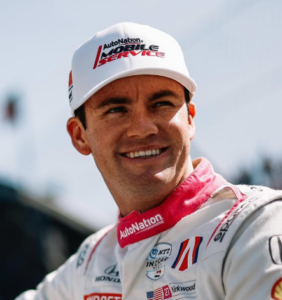
Kyle Kirkwood: Impact on the Race Strategy
The sudden loss of grip altered Kirkwood’s race strategy significantly. Instead of being able to defend his position or push forward, he was forced to go into full damage-limitation mode.
Competitors behind him took advantage of his struggles, overtaking him with ease as he fought to keep the car on the racing line.
For Kirkwood, this race serves as a lesson in unpredictability. Even the most well-planned race strategies can unravel when unforeseen factors come into play.
Moving forward, both he and the Andretti Global team will be analyzing tire wear data meticulously to prevent such a situation from recurring in future races.
Colton Herta’s Strong Finish Tarnished by a Penalty
While Kirkwood’s tire troubles dominated his race, his teammate Colton Herta had his own drama to deal with.
Herta crossed the line in P4, seemingly securing a strong finish for Andretti Global. However, post-race scrutiny from officials resulted in a penalty for his #26 car.
The penalty included a $25,000 fine and a deduction of 10 championship points, a significant blow to his season standings.
View this post on Instagram
The Role of Tire Management in Race Outcomes
Kirkwood’s experience underscores the importance of tire management in motorsports. While outright speed is essential, understanding how tires wear over long stints is crucial to maintaining a competitive edge. Tire degradation can be influenced by multiple factors, including:
- Track surface conditions
- Ambient temperature
- Car setup and balance
- Driving style and braking patterns
Despite the disappointing finish, Kirkwood remains a strong contender in the championship. This setback will serve as motivation for him and his team to fine-tune their approach to tire strategies in upcoming races.
Motorsport is unpredictable, and adaptability is key to long-term success.
Also Read: Brad Keselowski’s RFK Racing Declines Third Open Car Amid Efforts to Secure Charter
